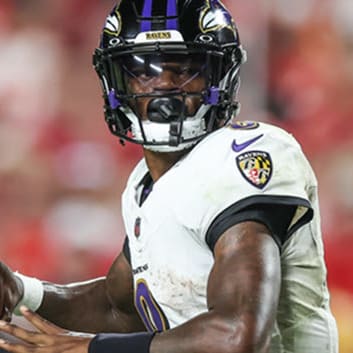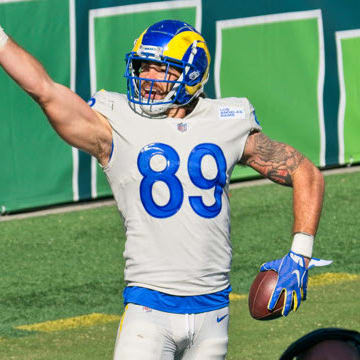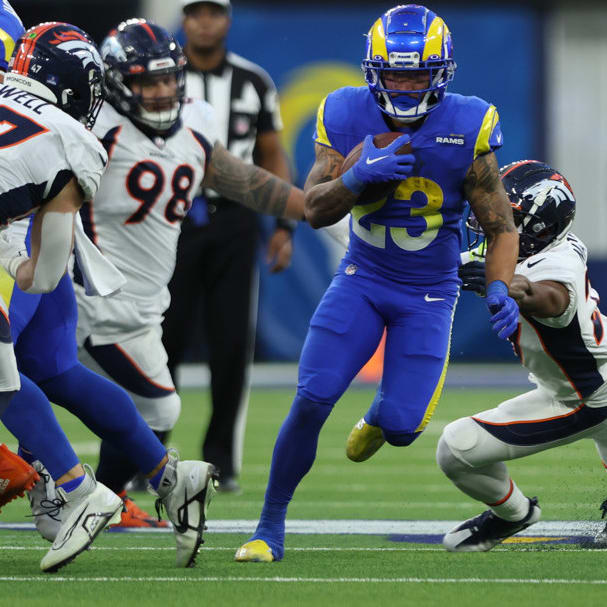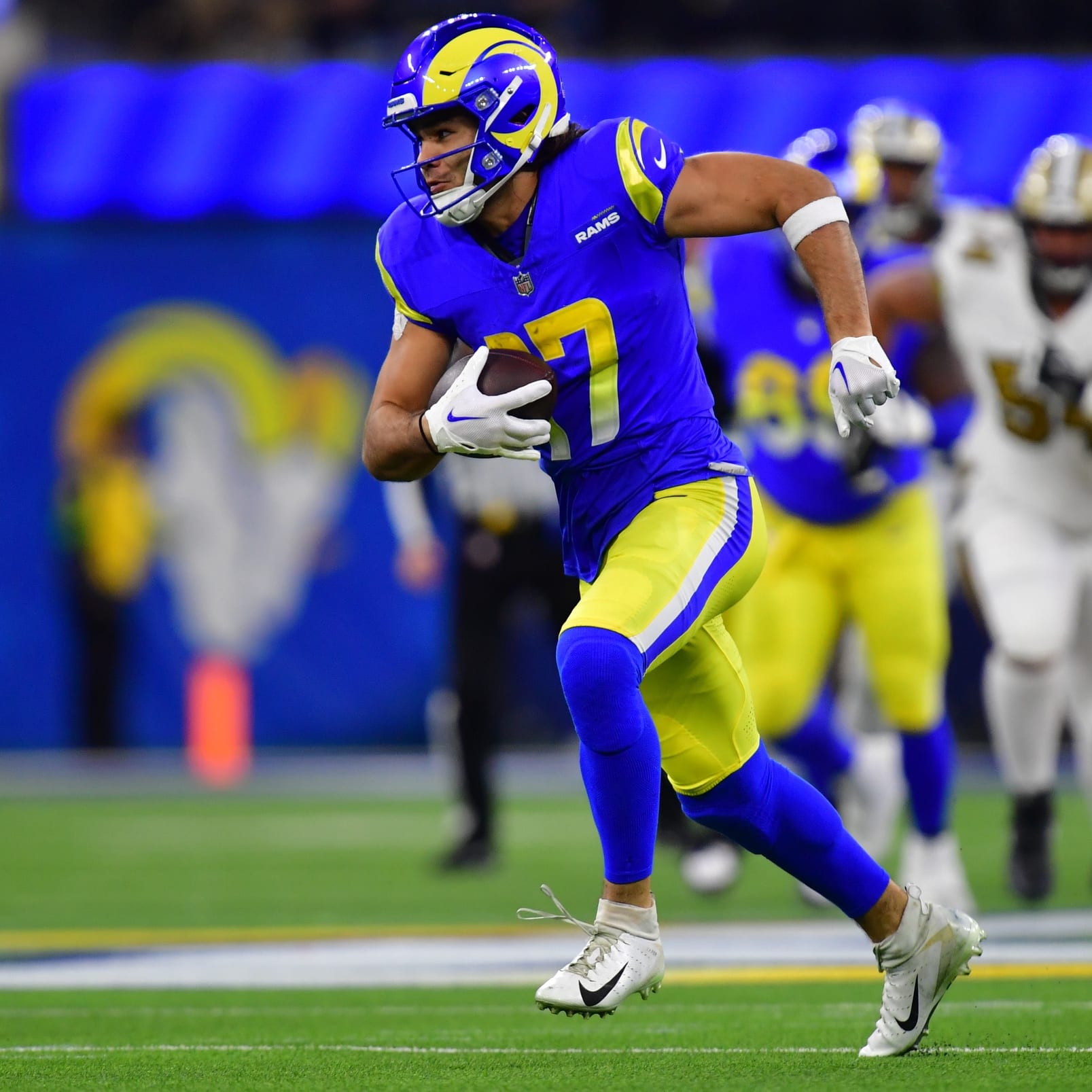This article is part of our Best Ball Strategy series.
Rookie receivers have offered more profit in recent years and drafters in Underdog Best Ball leagues are understandably trying to stay ahead of that curve by diving deep into the extremely talented 2021 rookie wide receiver class. This three-part series will look at this rookie receiver class and try to determine which ones are worth their current prices and which ones are overrated by the market.
This article will look at Ja'Marr Chase, DeVonta Smith, Jaylen Waddle and Rondale Moore.
Ja'Marr Chase, CIN (47.7 Underdog ADP)
Chase's stock is on the way down, and it's long overdue. The fifth overall pick out of LSU should be a standout starting receiver in the NFL at some point, perhaps even during the 2021 season, but his earlier price was higher than teammate Tee Higgins (now 46.0), and it was never reasonable to expect Chase to outplay Higgins. Higgins is a mega-prospect in his own right and already demonstrated high-level WR1 abilities in 2020, so even if Chase is very good it's unfair to expect him to match Higgins' pace. Additional concerns are mounting for Chase's 2021 play, however, especially after dropping three passes in Cincinnati's second preseason game. It would make sense if Chase needs some time to shake off the rust, and in the meantime Higgins and Tyler Boyd (68.0) are more than capable of picking up the slack.
Verdict: Fade until at least sixth round
DeVonta Smith, PHI (76.3 Underdog ADP)
Smith has shown the polish expected of him after a historical Heisman-winning 2020 campaign and a generally dominant four-year career at Alabama, and when healthy he should serve as the WR1 for the Eagles – a team that might spend a lot of time losing and throwing to play catch-up this year. Smith should be busy whatever way his rookie year goes. The questions in the meantime are what kind of quality his targets will be, and how often he'll be on the field. Although he has since recovered from it, a knee sprain from earlier in training camp did nothing to ease concerns about how Smith's sub-170 pound frame will hold up against the rigors of NFL play. That, and there's the possibility that even a plentiful target count could go to some amount of waste given the questionable passing abilities of Jalen Hurts and Joe Flacco.
Even if the quarterbacks hold him back somewhat, Smith could still pay off at this current ADP. Among receivers in this range only DJ Chark (83.0 Underdog ADP) and Brandin Cooks (88.0 Underdog ADP) have a similar likelihood of serving as the WR1 for their respective teams, and there are arguments to make that Smith has the most stable target share out of the three. I personally prefer Chark because I think there's greater big-play and touchdown potential in his case, which is something to keep in mind for Underdog's 0.5PPR scoring. Smith would likely project better for full point PPR, where the Eagles' low touchdown total matters less.
Verdict: Fair price
Jaylen Waddle, MIA (92.6 Underdog ADP)
Smith's teammate from Alabama, Waddle headed into camp with some amount of lingering concern over his ankle, which suffered a disheartening fracture just before the midpoint of the 2020 season. So far it seems like the ankle issues are behind Waddle, in which case he should be prepared to make his substantial talent evident in the box score. Great as Smith was at Alabama, improbably winning the 2020 Heisman Trophy, Waddle was the first of the two drafted (Waddle sixth overall, Smith 12th). Listed at 5-foot-10, 182 pounds, Waddle was likely preferred for his more conventional NFL frame and greater speed.
That's not to say Waddle is all projection based on his tools. Waddle was incredibly productive at Alabama. If Smith had played for another school, there's a good chance Waddle is winning that 2020 Heisman Trophy instead. Dangerous from the slot as a horizontal runner and downfield as a deep threat, Waddle is a major problem for any defense. Waddle's snap and target count is less certain in Miami than Smith's are in Philadelphia, however. Whereas the Eagles only have their tight ends and Jalen Reagor competing for targets over Smith, the Dolphins have a much more crowded room with players like Will Fuller, DeVante Parker, Mike Gesicki and even Albert Wilson pushing for playing time.
In the eighth round, though, Waddle is worth the risk, especially in best ball. Fuller is suspended for one game and has a substantial injury history, and Parker has a major injury history in his own right. That, and Waddle might be a rare enough talent to displace them both anyway. But in the meantime he faces a significant challenge in the fact that if the Dolphins choose to go with a Fuller-Gesicki-Parker loadout in three-wide sets they will likely do well with that group. For Waddle to earn the number of reps necessary for fantasy profit he will need to earn the work through his own compelling play. It's a distinctly possible scenario, just one that requires him to clear a fairly high bar.
Verdict: Fair Price
Elijah Moore, NYJ (99.9 UnderDog ADP)
Moore is very likely the real deal. Perhaps he can't quite offer as much big-play ability as Jaylen Waddle, and maybe he won't get open outside as effortlessly as DeVonta Smith, but Moore largely kept pace with those two in the SEC and put down excellent athletic metrics before the draft. We assume Smith and Waddle are very good athletes, but neither ran before the draft so we can't know for sure from where we stand. Moore, by contrast, has a 4.35-second pro day 40 for all to see at 5-foot-10, 178 pounds.
That's not elite athleticism for a player of Moore's slight build, but it's more than adequate to project him as an eventually efficient high-volume target in the NFL. That includes targets outside and not just in the slot. It's slowly losing its grip on the narrative, but it was once widely assumed that Moore would be a slot receiver in the NFL due to a small frame, but 5-10, 178 will definitely work on outside routes when sub-4.4 speed is in play. T.Y. Hilton is one example of this – it's generally difficult to line up outside as a 5-9, 180 receiver, but when you burn like Hilton those outside corners pay a higher price if they miss their jam.
Moore's playing time isn't an absolute given right off the bat – Corey Davis and Jamison Crowder are likely starters, and Keelan Cole is no bum – but we should still consider Moore the favorite to lead the team in outside snaps opposite Davis, and if Crowder gets hurt Moore should draw targets at an extremely high rate from the slot.
Rather than playing time, the bigger concern with Moore is the question of how well Zach Wilson will throw him the ball. If the snaps are there the targets will be there, but will the targets be ones Moore can catch and turn into more yardage? It's an unknown, and the main reason Moore goes this late. He's risky perhaps but the upside is considerable.
Verdict: Fair Price
Rondale Moore, ARI (111.5 Underdog ADP)
Moore is an exciting player, and one whose speed immediately changes the complexion of a Cardinals offense that was otherwise perilously slow. DeAndre Hopkins, Christian Kirk and A.J. Green might all be good this year, but they're a crew you can crash your safeties against with impunity. In any given pass play, Kyler Murray is about as likely to run for 40 yards than throw for 40 air yards against you. Moore could change that. If defenses crash the safeties, they might find Moore running free without a defender in frame. That threat, once understood by defenses, should make life easier for all of Murray, Hopkins, Kirk and Green. With a league-leading count of four-wide snaps, it's possible all four will be on the field together quite a lot this year.
Moore has meaningful limitations, however. At 5-foot-7, 180 pounds he's extremely well built, but his lack of height still presents a challenge. There are routes he just can't execute as well as many receivers bigger than him, and that makes his target share dependent on very particular scenarios suited to get him the ball. Those plays will occur – Moore is definitely the type of player who warrants designed touches – but the fact is it's an unknown at best whether Moore will get enough of the other, more organic type of targets that are usually necessary for a receiver to really break out.
At 111.5 Moore goes not just ahead of, but far ahead of Green (154.3 Underdog ADP) and Kirk (171.8 Underdog ADP). This might be an unfair expectation of Moore, because Green will likely log the majority of outside reps opposite Hopkins, and Kirk won't easily give up slot snaps in three-wide sets. Fantasy drafters tend to transfer their bitterness toward Kirk into generous benefit of the doubt for Moore, but this sort of spite drafting isn't the result of clear thinking. Kirk disappointing as a past fantasy pick, largely for reasons outside of his control, is not a positive data point for Moore's prospects in the meantime. It just meant people expected too much of Kirk at the time, when he was running out of position in the role Green will likely inhabit this year.
Kirk was still good even when playing out of position, he just didn't provide the volume his now-bitter investors hoped for. It's vain to equate our wrong assumptions with failure on Kirk's part, and there's a good chance he makes that painfully clear this season. Strong as a prospect as Moore is, Kirk was absolutely as good or better of a slot prospect out of Texas A&M as Moore is out of Purdue. With Larry Fitzgerald gone Kirk will likely prove more effective in his ideal position this year than he did running outside and downfield prior to 2021.
Moore should have his day as Arizona's top slot receiver, and that could arrive as soon as 2021. But Kirk is an overlooked obstacle in the meantime, and Moore will be a much safer bet after Kirk likely walks in free agency following this season.
Verdict: Likely reach; 2021 is one year early












